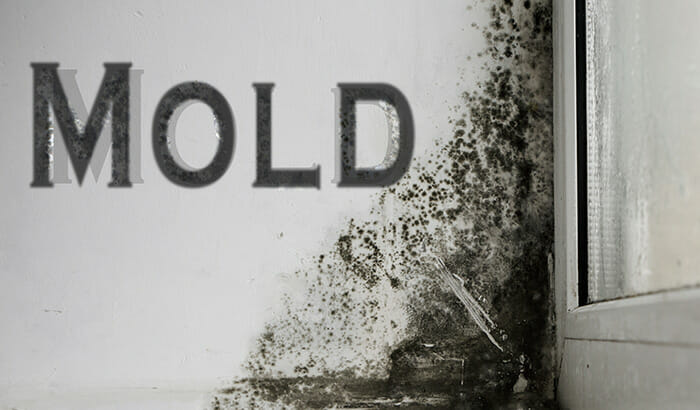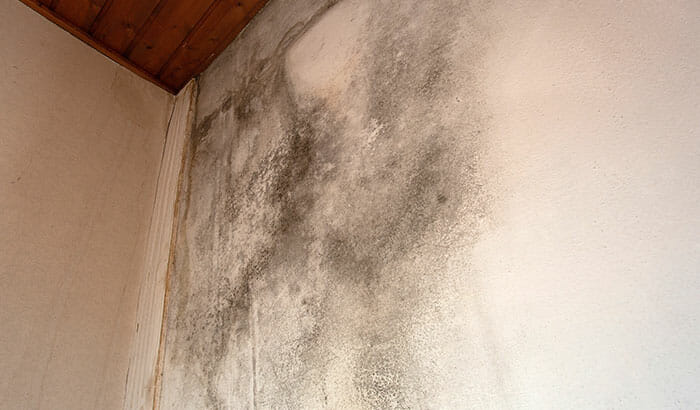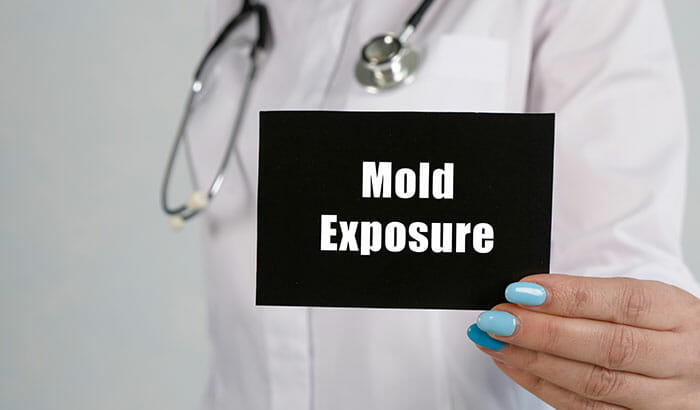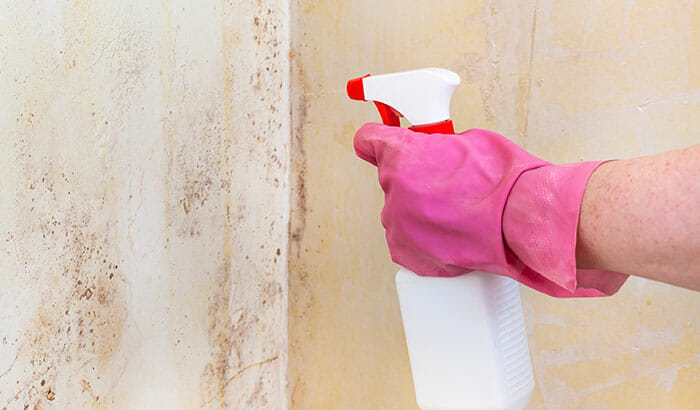If you’ve found mold in your home, read on to learn why it grows, how it can affect your family, and most importantly, how to get rid of mold.
No one is ever happy to see mold in their home. It usually comes unexpectedly and as the result of another problem you may or may not have known about. It can have harmful effects on your family’s health, not to mention the resale value of your home. And while mold can be difficult to get rid of, it can be done.
What are Mold and Mildew?
Mold is a collective term for microscopic fungi that grow as multicellular filaments – hair-like structures. Mildew is a certain kind of mold that often appears in showers, windowsills, and other moist places but is often used interchangeably with mold.
Why Does Mold Grow?
Mold is everywhere, and it’s very opportunistic. It can grow anywhere it can find a source of nutrients. This includes food, fabric, paper, leather, carpet, ceilings, and walls.
It prefers dark and warm places because ultraviolet light keeps it from growing. In the right conditions, mold can begin to appear within 24 to 48 hours.
Usually, you can keep mold to a minimum if you are diligent about cleaning surfaces that tend to be dark and moist, such as windowsills and showers. But less apparent conditions can create ideal breeding grounds for mold, such as the following:
- Roof leaks
- Pipe leaks
- Overflowed toilet
- Liquid spills
- Wet clothes
- Humidifiers
- Areas of poor ventilation
- Carpet damp from heavy traffic and wet shoes
- A shaded outside wall in a humid place or during humid weather
Unfortunately, in many cases, you may not be aware of these conditions until you see mold growth or smell that telltale musty odor.
Why is Mold a Problem?
Mold not only makes areas of your home look and smell dirty, but it can also create serious health problems for sensitive people, including the following:
- Allergic reactions — Many people have allergic reactions to mold and mildew. These symptoms can be severe in some people and grow with repeated exposure.
- Asthma — Mold can trigger asthma episodes, making breathing difficult for people who suffer from it.
- Fungal infection — This is more of a concern for people with weakened immune systems, including those with HIV, transplant patients, babies, and the elderly.
- Long-term exposure to toxins — Some molds produce chemicals called mycotoxins that may cause a wide range of symptoms. Prolonged exposure to these can lead to health problems even for people with healthy immune systems.
How to Get Rid of Mold?
This is the big question. We know what causes mold and how to prevent it — if we know about it — but what about when it has already taken hold? This might seem like a simple question, but it isn’t, especially when it’s in a porous material like carpet or in an area where it’s hard to regulate the humidity.
Here are a few tips to get rid of mold once you find it in your home. You may end up needing to try multiple of them. In many cases, you may need to call a professional mold removal service to end your mold outbreak ultimately.
- First, you need to locate and understand how the moisture came into the affected area in the first place. Removing mold in an area that stays perpetually damp will be very difficult.
- As soon as possible, try to contain the affected area. Mold will release spores into the air that can land elsewhere and start new growth. Isolate the area by closing doors and windows, using polyethylene sheets and duct tape to seal doorways.
- Dry the area out. If there’s a lot of water, as with a flooding situation, you may need a mop or wet/dry vacuum. A dehumidifier and fan can help remove moisture from the air, allowing surfaces to dry more quickly.
- Scrub mold-affected areas with a stiff brush, soap, and hot water. This isn’t intended to disinfect the area; just remove the bulk of the mold colony and any toxins. Be sure to wear rubber gloves, goggles, and an N95 respirator.
- Disinfect the cleaned area. Once you’ve removed the visible mold from non-porous surfaces, it still may be necessary to use bleach to kill any remaining spores. To do this, use a solution of 10 parts water to one part bleach. Never mix bleach with Ammonia.
- For porous materials, bleach won’t penetrate below the surface. Borax, vinegar, or baking soda can kill most kinds of mold in porous materials. Still, it’s challenging to say the mold is completely gone, so it will be necessary to watch for the mold to return if you take this route.
- Removal of infected materials. This may be necessary, especially for porous surfaces like drywall, wood, or carpet. Whether you can kill every spore and filament in these materials is questionable. So be prepared to remove them to prevent spreading. For smaller items infected by molds, such as newspapers, cardboard, or clothing, put them in a plastic bag for removal.
- Hire a professional mold remediation company. If you suffer from any health conditions that leave you sensitive to mold, you shouldn’t try to clean it yourself. Even if you don’t, professionals will have tools, chemicals, and experience with mold removal you probably don’t have.
Let the Pros at Bull Matrix Restoration Handle Your Mold Problem
It’s one thing to talk about how to get rid of mold; it’s something else to put that knowledge into practice. Without the experience and the right tools, you may end up fighting an uphill battle while your family suffers the consequences.
Mold can hide anywhere in your home: in the carpet, behind wallpaper, and even in your HVAC system. Contact us today if you’re unsure if you have unseen mold. We’ll come out and complete a thorough mold test. Then we’ll give you recommendations and an estimate to remove your mold and allow you to return to life without mold.




